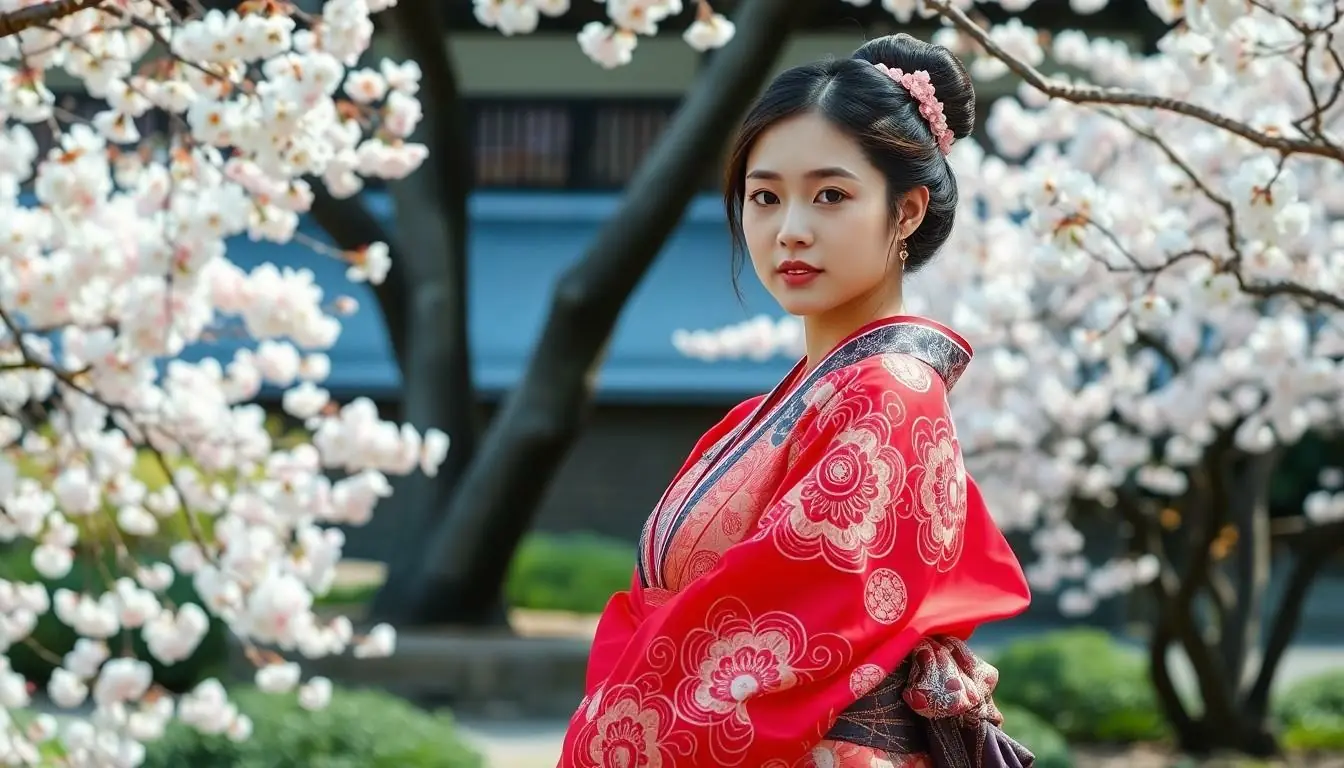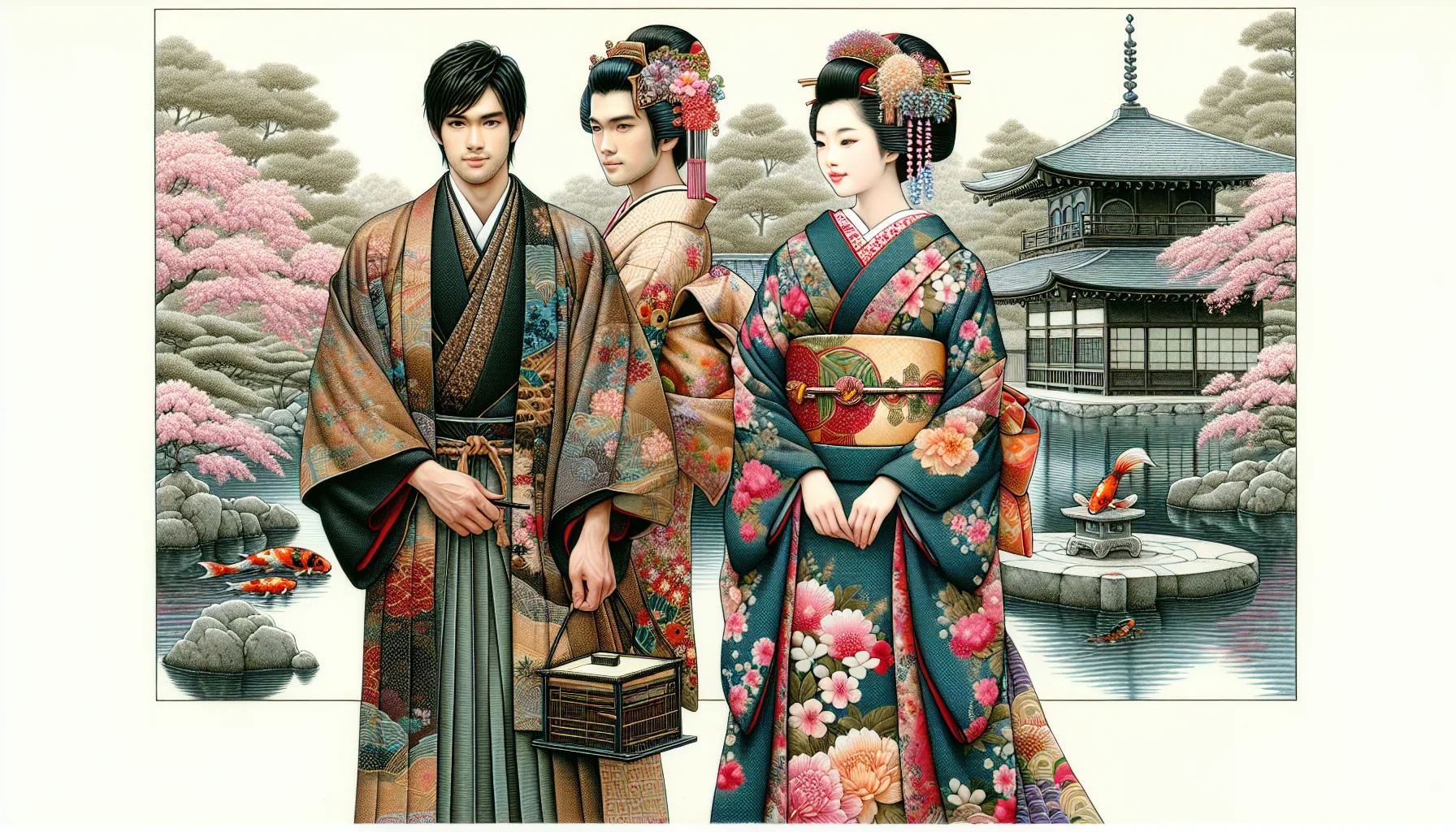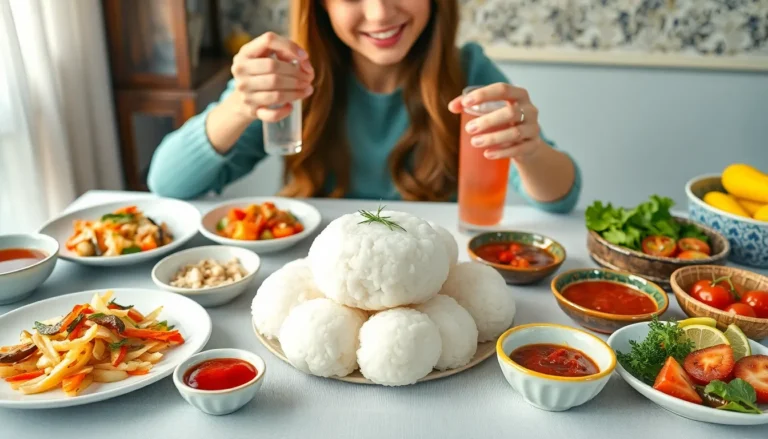Table of Contents
ToggleWhen it comes to formal wear, Japan takes the cake— and probably the tea too! Japanese formal attire isn’t just about looking sharp; it’s a delightful blend of tradition and modern flair that can make anyone feel like they’ve stepped right out of a samurai movie or a high-fashion runway. From the elegant kimono to the dapper hakama, these outfits have stories woven into their fabric, and they sure know how to make an entrance.
Dressing up in Japanese formal wear isn’t just about impressing your friends at the next wedding; it’s an experience that transforms the ordinary into the extraordinary. So whether you’re donning a classic kimono or a sleek suit with a twist, get ready to turn heads and maybe even spark a conversation about the rich culture behind these stunning garments. Who knew looking good could be this much fun?
Overview of Japanese Formal Wear
Japanese formal wear encapsulates a rich fusion of tradition and modern style. Kimonos, with their exquisite fabrics and intricate patterns, represent timeless elegance. These garments often include details such as wide sleeves and elaborate obi belts that enhance their beauty.
Hakama serves as another vital component of formal attire, commonly worn by both men and women during significant occasions. Typically consisting of pleated trousers, hakama complement the kimono, creating a polished look. Formal events frequently call for these ensembles, reflecting cultural significance and individual expression.
The appeal of Japanese formal wear extends beyond aesthetics; it also offers cultural richness. Traditional attire functions not only as clothing but also as a means of connecting with Japan’s history. Understanding the symbolism behind patterns and colors provides deeper appreciation for these garments.
Special ceremonies like weddings and tea ceremonies frequently necessitate formal wear, showcasing varying styles tailored for specific events. Men’s formal attire can include options like the montsuki, a formal kimono adorned with family crests. Women’s choices may range from furisode, featuring long sleeves and vibrant designs, to simpler styles for more understated occasions.
In addition to traditional forms, contemporary designers integrate modern elements into these outfits. This innovative approach keeps formal wear relevant, appealing to younger generations while respecting cultural roots. The evolution of Japanese formal wear illustrates how tradition can coexist with modern fashion, enriching the overall experience for those who choose to wear it.
Types of Japanese Formal Wear

Japanese formal wear includes various styles, each with distinct characteristics suited for different occasions.
Kimono
Kimonos stand as a symbol of elegance and tradition in Japanese culture. They feature exquisite fabrics, intricate patterns, and vibrant colors, making each piece unique. The kimono’s design varies based on the wearer’s age, occasion, and season. Furisode, a type of kimono with long sleeves, is often worn by young women during celebrations like coming-of-age ceremonies. Men’s kimonos, typically simpler in design, suit formal events like weddings and tea ceremonies. Accessories such as obi belts enhance the overall appearance, symbolizing sophistication and adherence to cultural norms. For many, wearing a kimono embodies respect for Japanese heritage.
Suits
Suits reflect modern Japanese formal attire, combining Western influences with local elements. Tailored styles, such as shōzoku, are often seen in business settings and weddings. These suits usually comprise a jacket, trousers, and a dress shirt. Men may opt for a classic black or dark blue suit in formal situations, while women choose tailored dresses or skirts for elegance. Accessories like ties and formal shoes complete the look. Japanese designers often infuse traditional patterns into suit designs, creating a unique blend of contemporary and cultural aesthetics. Wearing a suit signifies professionalism and respect in various formal environments.
Cultural Significance
Japanese formal wear embodies deep cultural significance, reflecting values rooted in tradition and modern expression. These garments, like kimonos and hakama, connect individuals to Japan’s historical journey.
Historical Context
Kimonos date back to the Heian period, evolving with Japan’s history. Originally, they showcased a wearer’s status and identity through fabric and color. Over centuries, styles adapted to social changes, while formal occasions, such as weddings and tea ceremonies, solidified their cultural significance. Patterns often carry meanings, representing seasons or significant events. Men’s garments, including the montsuki, symbolize respect and honor during formal gatherings. The evolution of these designs highlights how aesthetics merge with cultural values, making attire more than mere clothing.
Modern Adaptations
Contemporary designers infuse traditional formal wear with modern aesthetics. Innovations range from integrating Western elements into kimonos to introducing tailored suits that respect cultural roots. Young people often embrace fusion styles at formal events, balancing respect for heritage with personal expression. Events like weddings may now feature diverse interpretations of traditional attire, appealing to a younger audience. The integration of fresh designs breathes new life into traditional garments, ensuring they maintain relevance while honoring their rich history.
Styling Tips for Japanese Formal Wear
Creating the perfect look with Japanese formal wear involves careful attention to details like accessories and footwear. Incorporating these elements elevates the overall appearance.
Accessories
Accessories play a crucial role in enhancing Japanese formal wear. Various items like obi, obijime, and obiage complete a kimono outfit. An obi, a wide belt, secures the kimono while adding a pop of color. Choosing an obijime, a cord that adds embellishment, can further enrich the ensemble. For traditional styles, a kanzashi, hairpin, adds elegance to an updo, showcasing intricate designs. Additionally, women can wear a tenugui, a decorative cloth, in myriad ways, either as a headband or wrapped around the obi. Men might select a simple but stylish haori jacket to layer over formal attire, enhancing the overall sophistication.
Footwear
Selecting proper footwear ensures comfort and style while wearing Japanese formal garments. Traditional sandals, known as geta, offer both height and a unique aesthetic. Getting the right fit is essential for comfort, as they typically feature elevated wooden soles. Waraji, made from straw, provide a more casual yet traditional option. For kimonos worn to formal events, zori sandals, crafted from fabric or leather, present a refined choice. When opting for suits, dress shoes made from polished leather complete the look seamlessly. Ensuring the choice of footwear complements the outfit contributes to an overall polished appearance that resonates with cultural significance.
Japanese formal wear stands as a testament to the country’s rich cultural heritage and evolving fashion landscape. The blend of traditional elements with modern design ensures these garments remain relevant and appealing to new generations. Wearing a kimono or a suit not only enhances one’s appearance but also fosters a deeper appreciation for Japan’s history and values.
As individuals embrace these styles for various occasions, they contribute to a living tradition that honors the past while looking toward the future. Whether attending a wedding or a formal event, the choice of Japanese formal wear offers a unique opportunity to connect with culture and make a lasting impression.






